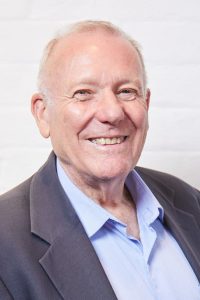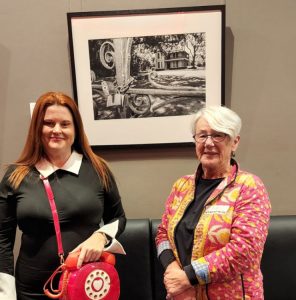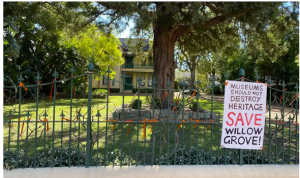by Ian Stephenson, Glebe Society President, August 2022, from Bulletin 6/2022 (August)
 We are now at the end of the first month of the new financial year. Our AGM will be held at the Glebe Youth Service, 84 Glebe Point Rd, on Sunday 11 September, from 11am to 1pm. Refreshments will be provided.
We are now at the end of the first month of the new financial year. Our AGM will be held at the Glebe Youth Service, 84 Glebe Point Rd, on Sunday 11 September, from 11am to 1pm. Refreshments will be provided.

The Society is looking for members to join our management committee, particularly a Community Development Convenor and an Environment Convenor.
Several people already work across these areas. For example, the Communications, Planning and Events Convenors all work in areas related to community, including the Bulletin, Glebe Walks and planning campaigns. The Community Development Convenor’s role would be to liaise with other committee members about their work in the community field, report to the management committee on what is being done overall, identify new projects or gaps and recommend strategies to implement them. They could also re-establish the Community Development Subcommittee to assist them, if they wished. It is a similar situation for Environment; our ecology arm, the Blue Wren Subcommittee, does such amazing work. I would love to hear from you if you are interested in joining the management committee as Community Development or Environment Convenor.
On Tuesday, 26 July, with our Secretary Jude Paul and Treasurer Jane Gatwood, and I attended the opening of the National Trust’s No Time to Spare exhibition at the Riverside Theatre, Parramatta.

The exhibition takes its name from the 1962 exhibition that the National Trust Women’s Committee held at the David Jones Art Gallery. At that time, NSW had no heritage legislation. The year before, despite a hard-fought public campaign, the beautiful 1830s house, Subiaco, was demolished for a carpark. The house was designed by John Verge, who also designed Glebe’s Lyndhurst.
The 1962 exhibition was part of a well-considered strategy to get support for conservation. Photographs of the buildings were taken by the distinguished photographer, Max Dupain. In 1963 they were published by Ure Smith. Mr Justice McClemens’ introduction to the book is as valid today as it was in 1963:
We are not a bankrupt nation, we are a nation with a great future, we are a nation in which development is taking place rapidly. Because of this preservation of the best of our links with the past becomes vitally important. Valuable work is being done, it is true, but it is too little and soon it will be too late.

No Time to Spare II opened last year at Observatory Hill. It will be in Parramatta until September and is then going to Bowral. Perhaps we can arrange to give it a run at the new Tramsheds Community Centre? Glebe features in the exhibition, including Glebe Island Bridge and the brutalist Bidura Children’s Court. Also featured were the nearby magnificent clock tower of Central Station – soon to have its scale dwarfed by a 182-metre office building behind the old parcels office in Railway Square – and the Ultimo Powerhouse, where Lionel Glendenning’s 1988 Sulman Award-winning building seems to be earmarked for demolition.











There are no comments yet. Please leave yours.